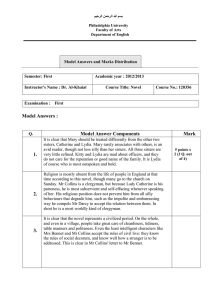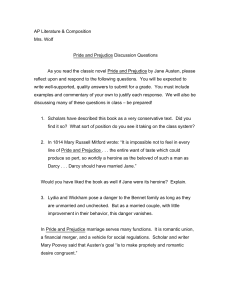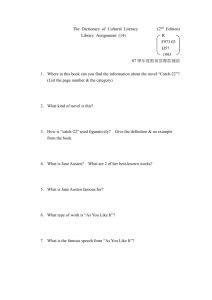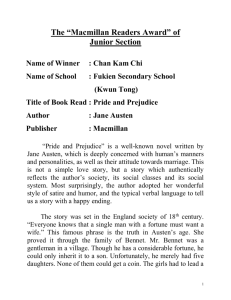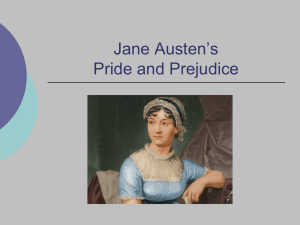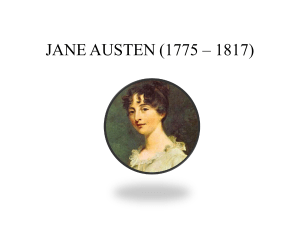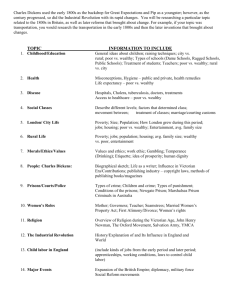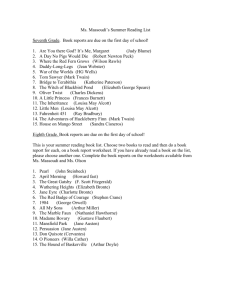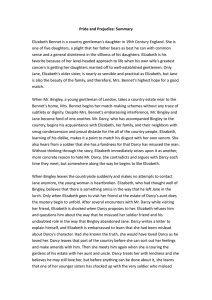Pride and Prejudice
advertisement
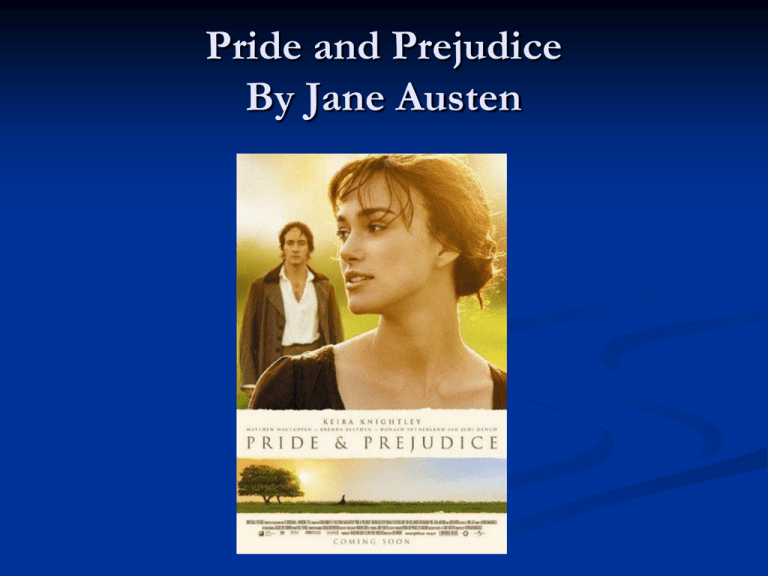
Pride and Prejudice By Jane Austen Author Background Born in 1775 in a small town in England Grew up with 6 brothers and 1 sister, Cassandra, whom she was close to. Her family was very active in literature (reading it aloud and discussing it) Father was a minister When Jane was in her teens, she wrote parodies of sentimental romance novels for her family. Clearly, she was mocking the noble hero and the melodramatic love plot Her first novel published was Sense and Sensibility in 1795 and in 1811 Pride and Prejudice was published. In 1801, she is said to have fallen in love with a young minister who died suddenly. When she was 26, she agreed to marry a wealthy man but broke it off because she was not in love with him, even though she would have been wealthy for the rest of her life. She never remarried but spent her life with family and friends in the English countryside. She published many more novels in her life including Mansfield Park, Persuasion, and Emma Austen died in 1817 at the age of 41 of a sudden illness Her works continued to grow in popularity and many have been made into movies (Bridget Jone’s Diary, Clueless) Themes in Austen’s writing Courtship and marriage—the difficulty of following the social rules at the time The narrow and rigid expectations of women and men in society Relationships and miscommunication between men and women The humor in the social rules of the time Social background During this time in England, women could not pursue a career or occupation for money. Their only choices were to marry or be poor. Marrying for love was seldom an option Women could not inherit money because it went to the males in the family. Because of this, many women devoted themselves to “attracting” a husband. They immersed themselves in ladylike arts such as singing, playing the piano, drawing, painting, and embroidering. Education was not considered essential for women because they would spend their lives in the home Setting P&P takes place in England during this time. (early 1800’s) This was known as the Regency Period or the “age of elegance” because the Industrial Revolution made it possible for many people to become wealthy. Emphasis on the arts and fashion Upper class wealth was to “show off” the money Many wealthy owned large country estates with landscaped gardens and held elegant parties However, there was a dark side: other people were struggling to survive and were unemployed. Women turned to prostitution Child labor in factories Gambling/brothels/alcoholism Austen portrays the self-centeredness of the uppermiddle class who ignored the lower-class problems She mocks their lifestyles and values through observation of what she saw around her. Romanticism 1785-1830 (in Europe) Love of nature (nature heals) Emphasis on individuality Passion and emotion over reason Contrasting and opposite images Importance of solitude The Characters Mr. Bennet—father in the novel who has 5 daughters and a modest estate but can’t pass it on to them b/c they are female Mrs. Bennet—nagging mother whose only wish is to marry her daughters off (preferably to someone rich) Elizabeth—second oldest daughter and main character. Lizzy is intelligent and spirited and is very insightful into the character of other people Jane—oldest daughter who is kind and caring. She is close to Elizabeth and falls in love with Mr. Bingley Charles Bingley—kind, wealthy man who is in love with Jane but is very influenced by his friends, especially Mr. Darcy Mr. Darcy—wealthy man who is a mystery to Elizabeth but often appears snobbish and rude Mary—3rd youngest daughter who prefers reading over socializing Catherine (Kitty)—4th youngest daughter who loves to flirt with older men and socialize Lydia—youngest daughter who is immature and irresponsible (along with Kitty) Wickam—a handsome and wealthy man who Elizabeth is first attracted to but hides many secrets Caroline Bingley-Bingley’s snobbish sister who is beautiful and obviously attracted to Darcy.
